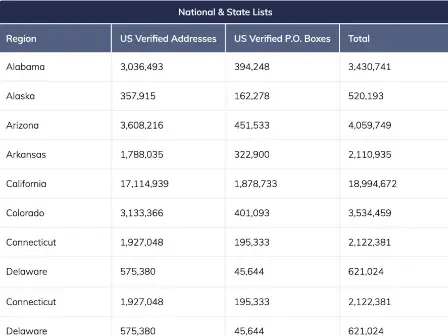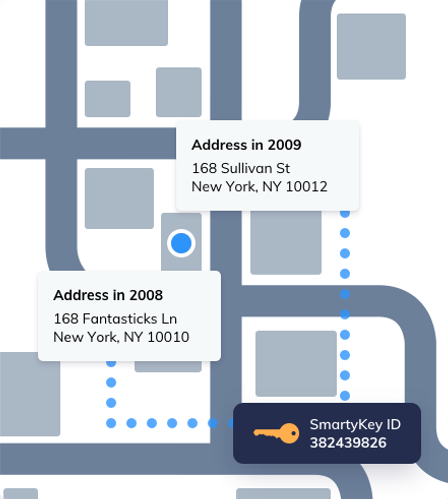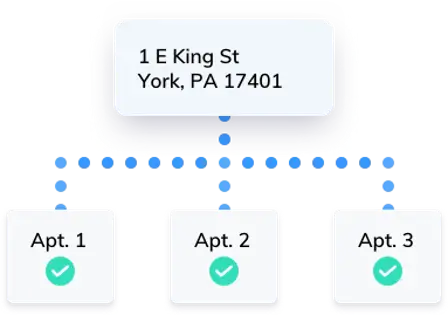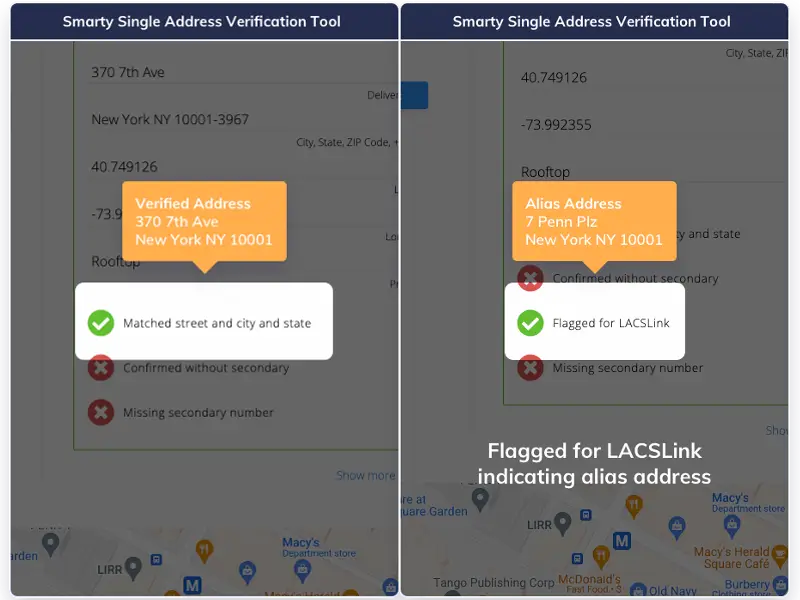What is a national address database and how is it used?

A national address database is a database that contains a list of addresses for delivery points within a specific country.
For example, in 2016, the USA began creating the USDOT (United States Department of Transportation) National Address Database (NAD). The DOT, US Census Bureau, and other agencies in the federal government began aggregating data from state and tribal governments. As of May 2022, the USDOT National Address Database contains 65.2 million addresses which represent only ⅓ of the addresses in the United States.
Because federal agency lists may be incomplete, private sector companies, like Smarty who processes billions of addresses per day, use proprietary approaches to building far more complete lists of mailable addresses.
When most people refer to an address database, what they usually mean is an address point dataset or list of addresses within a database. People seeking a national address database are often looking for the most complete address list possible for a certain country, such as those provided by Smarty.
In this article, we’ll cover:
- What makes a good national address database?
- How is a national list of addresses used?
- Data management with national address databases
- What is the best US national address list?
What makes a good national address database?
Before we look at how national address lists are used, let’s establish a baseline for the kind of file that makes the following use cases possible. You’ll especially want to be familiar with the following quality criteria if you’re in the market for a national address database yourself.
-
Complete
For obvious reasons, you want the most complete list of addresses possible for maximum intelligence and optimized decision-making.
-
Accurate addresses
It doesn’t matter how big your address list is if it’s not accurate. Be sure to confirm that the addresses in any list you acquire are first standardized per the country’s guidelines and then verified by a reliable address authority as correct so that you don’t pay a bunch of money for junk.
-
Current address data
New addresses are constantly being created and existing addresses frequently change; be sure your list of addresses is updated regularly with current address data intelligence to keep your data squeaky clean.
-
Persistent unique identifier (PUID)
A leading address point dataset also provides a persistent unique identifier, like Smarty’s SmartyKey, which is an integer of up to 10 digits that is assigned to every location or delivery point. All the aliases of a single location will share the same unique ID which helps eliminate confusion and waste around duplicate address point records and makes data blending a piece of cake for even the most massive address files.
-
Cost effective
The above criteria are baseline for most of the use cases that follow, but your use case may also require additional bells and whistles. For example, do you need address-related metadata like a residence/business flag? Do you need the address parsed into component fields, or will a single field work for you? You should be able to make some choices to cost-effectively match the list of addresses to your use case requirements.

How is a national list of addresses used?
Address lists are used in multitudes of ways including mail delivery, shipping, market research and analysis, data management, and business operations.
An average person might assume a national address database is used only for mailing/shipping. And while the lists are sometimes used for mailing/shipping, some of the most prosperous companies understand the value of using the lists for market research and data management.
Let’s look a little closer at some of these research and management use cases to better understand the value that can be unlocked from address point records.
Market research and analysis
What kind of market research and analysis could you do with a national address list that can be filtered by ZIP, city, county, state, residence/business, and parent/child? Let your imagination run wild and you’ll realize the possibilities are wide and vast.
Let’s spark your creativity by taking a look at just a few.
-
Customer intelligence
Because they include addresses for customers and non-customers, companies use national address lists to extract valuable customer and prospect insights for marketing, operations, and other departments.
-
Resource planning
Companies use lists to analyze where current and potential customers are in relation to resources like mobile towers and linear assets like fiber cable or pipelines of gas or water.
-
Asset tracking
Some companies have physical assets, like servers or internet equipment, in various offsite locations. What if the company is multi-counting assets at alias locations? It happens. National address lists with a persistent unique identifier for each delivery point make accounting for assets easier and more accurate.
-
Sales intelligence
Address lists filtered by residence, business, or both are also used by sales departments to optimize sales territories.
-
Market saturation research
A variety of businesses, including large national corporations with commonly used services, like Comcast, invest heavily in national address lists to conduct market saturation studies.
Comcast linear assets are required for 3 of their 4 “quadruple play” offering including TV, internet, and landline and mobile phone service. The cost per linear foot to install and service pipe and cable is high.
Density and Saturation studies help companies make better business decisions based on ROI. For example, companies are far more likely to get a good ROI when installing linear assets in densely rather than sparsely populated areas. Companies look at where the coverage and people are to identify fully saturated and underserved areas based on user population density.
Likewise, retailers and healthcare providers can better determine locations for expansion.
-
Target market analysis
Real estate service and technology companies often use national address lists for target market analysis.
For example, a property management company that targets small apartment complexes may want to see how many complexes have 5 units or less in an area they’re considering for expansion.
Or perhaps a cable TV company targets apartment complexes having 20 or more units and would like to know how many of their target properties are in potential new areas.
Additionally, national market research companies purchase national address lists to look at target-market penetration rates of various products or services.

Data management with national address databases
Complete and accurate address lists with persistent unique identifiers help streamline data management processes, enhance data quality and trust, and improve reporting, analysis, and decision making to get the most out of address data.
Here are a few ways companies are improving data management with national address lists.
-
Address record deduplication
Unless a company has always used an address autocomplete solution to standardize and correct all of its incoming addresses, it will likely find many duplicate and erroneous records in its address database. Data entry is a leading culprit for duplicates as people misspell or enter addresses in multitudes of non-standard variations like these:

Whether companies realize it or not, duplicate records cost them dearly in postage/shipping, incorrect reporting, and wrong decision making. However, smart companies rid their database of addresses of duplicates with the help of an address verification service having intelligent matching logic to standardize and then verify addresses in preparation for deduplication.
Following deduplication, it’s not uncommon for addresses components to change, like street name, city name, and Zip Code. Companies easily solve that problem with monthly updates based on the address persistent unique identifier where verified addresses are updated rather than creating a variant duplicate.
Deduplication helps companies reduce data clutter, bloat, and confusion.
-
Address data synchronization and blending
Combining deduplication with regular updates of their national list of addresses, companies are in good shape to synchronize and blend records across disparate data platforms, further enhancing data clarity, management, reporting, and decision making throughout the entire organization.
-
Parent and child connections and counts
National address lists that show not only parent/child relationships but also tell you the precise number of children addresses per parent address, rather than just a broad range, help companies better organize and understand address-level data. Companies perform critical analysis and gain actionable marketing, operations, and strategy insights by examining all parent and child relationships and numbers of addresses for various properties like apartment complexes, business parks, and post office boxes.
-
Processing speed and accuracy
Companies also use persistent unique identifiers to improve processing speed and data accuracy. As you might expect, a persistent unique identifier of just 10 digits within a single field is much faster and less error-prone to process than multiple address fields of various lengths. However, this use case pertains more to very large databases.
-
Internal address unique identifiers
Some companies use a persistent unique identifier, like Smarty’s SmartyKey, as a basis to create their own persistent unique ID for customers within their own address database. This is a powerful data quality tool that further helps companies deduplicate and merge data to remove clutter, inaccuracies, and confusion.

What is the best US national address list?
Smarty's US Master Address List is the most reasonably-priced, complete, and accurate list of mailable addresses in the US, featuring 200+ million verified addresses deliverable by the USPS each with a persistent unique identifier (SmartyKey) for superior data management, reporting, and analysis.
Smarty gives you the most comprehensive and current lists of mailable addresses in the United States by processing billions of addresses per day, pulling out new and changed addresses as they're recognized, and utilizing other proprietary methods. Our list of 200+ million addresses are all verified and mailable by the USPS.
For more information, or get a sample list see the US Master Address List product page or contact sales.